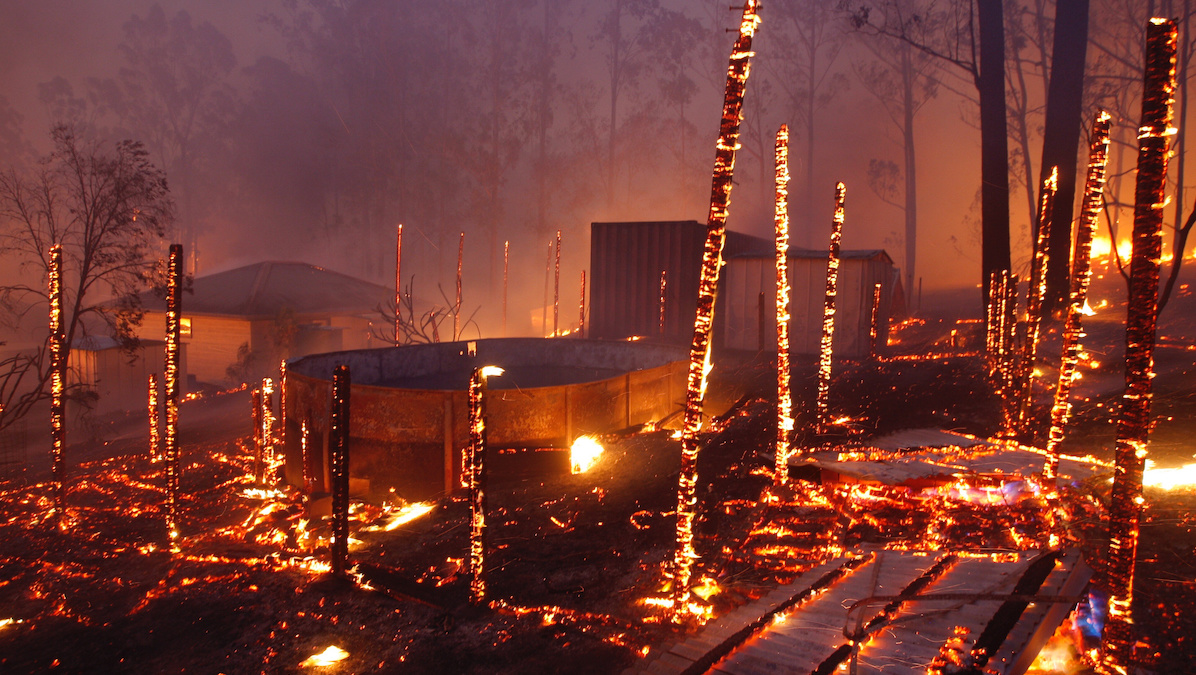
Climate Crisis Made Australia’s Historic Wildfires at Least 30% More Likely, Study Finds

A fire burns in New South Wales, Australia in November of 2019. Dean Sewell / The Sydney Morning Herald via Getty Images
The climate crisis played a significant role in Australia‘s devastating wildfire season, a group of researchers has confirmed.
Their findings, made public ahead of peer review Wednesday, concluded that the climate crisis made the fires that killed at least 34 people and destroyed nearly 6,000 buildings at least 30% more likely, The New York Times reported. And if global temperatures rise to two degrees Celsius above pre-industrial levels, the conditions that sparked the flames would be at least four times more likely to recur.
“Last year the fire prevention system in Australia, which is extremely well prepared for bushfires, was straining. It was at the limits of what it could handle, with volunteers working for weeks on end,” study coauthor Geert Jan van Oldenborgh of the Royal Netherlands Meteorological Institute told BBC News. “As the world warms, these events will become more likely and more common. And it’s not something that we are ready for.”
The study was carried out by World Weather Attribution, a group of scientists who have developed a method for rapidly determining the climate footprint of specific extreme weather events, as Scientific American explained. This was the most complicated such study the group has carried out, van Oldenborgh told The New York Times, because so many factors influence wildfires, from temperature and drought to wind and humidity.
The researchers looked at something called the Fire Weather Index, a measurement that combines all of these factors, and analyzed the likelihood of 2019 and 2020’s high fire index when compared to the likelihood of such a high index occurring in the cooler climate of 1900.
Climate models showed that the chance of this past year’s extreme fire weather had increased by 30% due to climate change, while observational studies showed that such weather was four times more likely to occur now than at the beginning of the 20th century.
The researchers also looked separately at heat and drought. They found no clear connection between climate change and drought risk, but they did for heat, Scientific American explained. The historical record showed that extreme heat waves were 10 times more likely now, while climate models showed that their probability had doubled.
The discrepancy between what the models predict and how high temperatures are actually getting is one weakness in the study, the researchers acknowledged. They said the actual contribution of climate change to the fires is likely to be much higher, but the 30% figure was the figure they could prove for sure.
Our WWA attribution study of Australian bushfire risk is out. TL;DNR: due to model deficiencies we can only compute a lower bound: climate change made fire weather as severe as observed this season at least 30% more likely, but it could be much more. https://t.co/exCf8TKK2L
— Geert Jan van Oldenborgh (@gjvoldenborgh) March 4, 2020
“I hope that people will see this as the study that did show there is a link between climate change and the bushfires,” van Oldenborgh told Scientific American.
The study comes about a week after another study emphasized the failure of climate models, showing that the intensity and duration of the Australian fires themselves greatly exceeded what climate models had predicted.
Climate scientist Michael Mann, who was not involved in Wednesday’s study, also emphasized the discrepancy between climate models and reality.
“Current generation climate models are simply not up to the task of extreme event attribution in many cases,” he wrote in his response. “They are not capturing key atmospheric mechanisms behind many extreme summer weather episodes that are almost certainly being influenced by climate change.”
He argued that studies like the World Weather Attribution report needed to be upfront about these limitations.
“Otherwise, they are potentially misleading the public and policymakers by understating the role that climate change is playing in these unprecedented weather extremes,” he wrote.
- Australia Wildfires Were Far Worse Than Climate Models Predicted ...
- The Climate Emergency Won’t Wait for the Press to Play Catch-Up - EcoWatch
- The Climate Emergency Won’t Wait for the Press to Play Catch-Up - EcoWatch
- Extreme Weather Suggests Future Climate Crisis Is Already Here
- Vivaldi's 'The Four Seasons' Captures the Climate Crisis

 233k
233k  41k
41k  Subscribe
Subscribe 